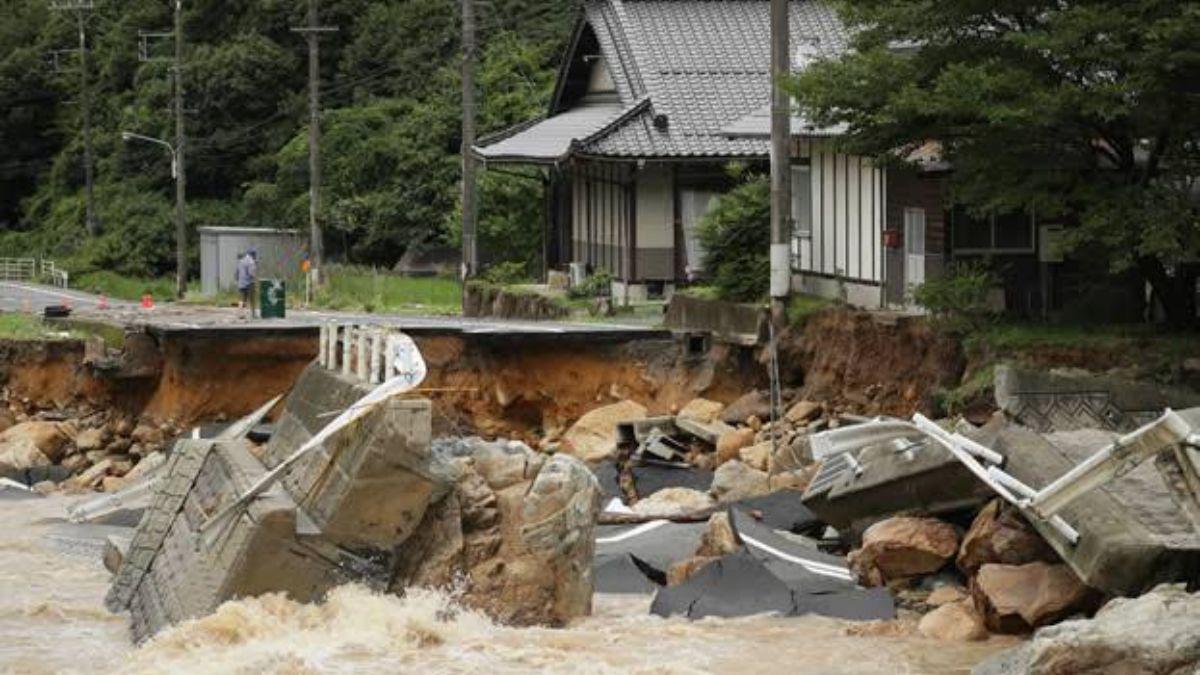 Image Credits: Punch Newspapers
Image Credits: Punch Newspapers
Typhoon Maria made a powerful landfall near Ofunato, Iwate Prefecture, at approximately 8:30 a.m. on Monday, unleashing unprecedented rainfall across Japan’s Tohoku region. The storm brought record-breaking precipitation, with Iwate Prefecture recording over 35 centimeters of rain within a 24-hour period, nearly double the typical August rainfall.
The severe weather has caused extensive damage throughout the region. In the city of Miyako, a residential area near the Nagasawa River experienced significant flooding, with at least one house inundated above floor level by 9 a.m. Local authorities are still assessing the full extent of the damage, as other properties in the area are suspected to be similarly affected.
In response to the rising water levels, particularly behind the Taki Dam in Kuji, the prefecture initiated an emergency water discharge operation at around 10:25 a.m. Authorities issued the highest-level evacuation alert to 8,300 residents across 4,177 households situated downstream from the dam.
As of 1 p.m. Monday, the Japan Meteorological Agency reported that Typhoon Maria, also designated as Typhoon No. 5, had a central atmospheric pressure of 994 hectopascals and maximum sustained winds of 72 kph, with gusts reaching up to 108 kph. The typhoon is anticipated to diminish in intensity, transitioning to a tropical storm by Tuesday.
This marks only the second recorded instance of a typhoon making landfall in Iwate Prefecture, the first being in 2016. It is also the third typhoon to impact the Tohoku region from the Pacific coast since records began in 1951.
The storm has severely disrupted transportation in the affected areas. The Akita Shinkansen service has been suspended between Akita and Morioka stations. Additionally, major airlines have been forced to cancel flights, with Japan Airlines scrapping 78 flights and All Nippon Airways canceling 8 flights. These cancellations affect routes between Haneda Airport or Osaka International Airport and various airports in the Tohoku region.
As Typhoon Maria continues to move across the region, recovery and restoration efforts are expected to intensify, with authorities and local communities working to address the immediate impacts of this formidable storm.
